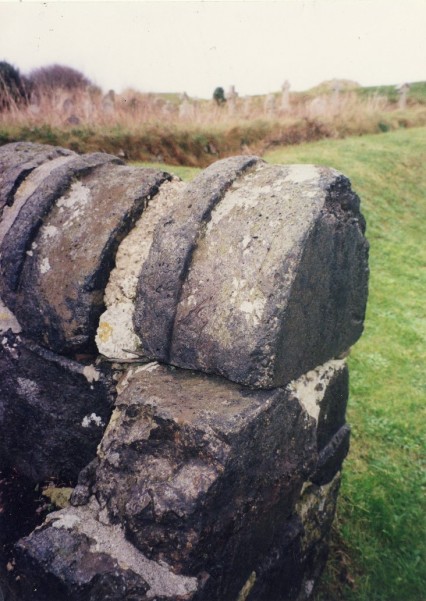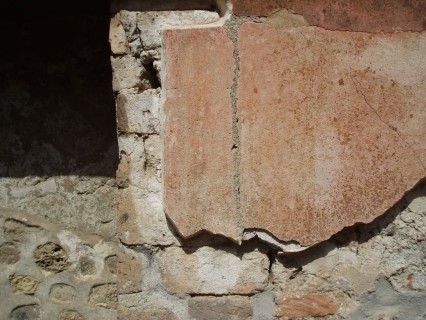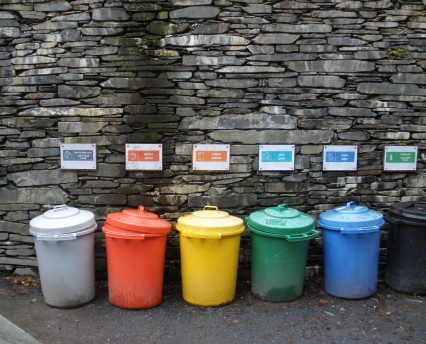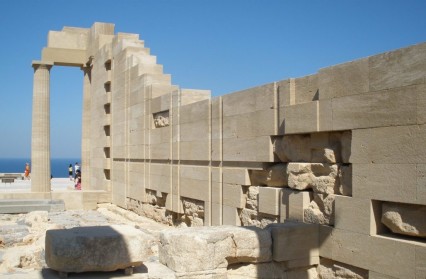Inspired by the painting of Thomas Jones, Richard Porch looks at the aesthetic joys of the most common of architectural features.
Walls; what are they good for? Well actually they demarcate the private realm from the public; they hold buildings up (at least the structural ones do) and you can decorate them externally and internally, as well as punch holes in them. You can also cover them in graffiti… but that’s for another article.
Personally, I’m all in favour of walls. Particularly the ones you see in warmer climes; specifically in those places where the rainfall is measured in millimetres not metres. I can accurately attribute my interest in walls and walling to Tom Jones. Actually that should be Thomas Jones (1742-1803), and it was due to a superb exhibition of his Italian paintings and oil sketches at the National Museum of Wales in 2003. This absorbing exhibition showed Thomas’s paintings of the backs of houses seen from the balcony of his studio overlooking the backstreets of Naples painted in the period 1782-83. He did numerous oil sketches depicting them with all their cracked render, damp patches and where countless inhabitants had emptied bowls of washing-up (and worse) against the elevation of the building. The net result was that the walling had become a kind of inadvertent visual record of what people had done to them over time. A modern photographer would have photographed them in tight detail and called them a ‘texture study’. For Thomas, painting them in the late 18th century and as a student of the great Welsh landscape artist Richard Wilson (1713-1782), they were a highly unconventional choice of subject matter for a landscape sketch. Some people have been tempted to think of them as some sort of proto-Modernist art the way people once looked at patches of Turner’s paintings and tried to equate them with later mid-20th century Abstract Expressionist work. With hindsight we can see that Jones was breaking away from the pictorial traditions of the day and choosing subjects based on direct observation. Something that would not happen again for another 100 years and the French En plein air painters of the late 19th century. Anyway, it was this artist’s interest in walls that set me thinking about the pictorial properties of walls and the stories behind them.

Living and working in Swansea I have easy access to walls with an historic story to tell. From the middle 18th century until the mid-19th century Swansea was the world centre for the copper smelting industry. The fruits of the furnaces went out into the world as wire, sheet and bar – the by-products stayed in Swansea. However, not all of them went into slag heaps; in the best Victorian tradition of ‘waste not – want not’ some of the impurities generated by the copper smelting process were ladled out of furnaces and moulds and then used to create coping stones and blocks. Now, this stuff isn’t pretty to look at; but then neither are modern breeze blocks. But once the slag had been converted into hefty-sized rectangular blocks or half-round coping stones, the Victorians found a use for them in garden walling. They also used them on the quoins of terraced worker housing and in stretches of walling destined not to be seen by the public. Bearing in mind that these blocks were made from impurities and haphazardly manufactured as a by-product, the structural properties of them and their ability to wear over time was (and is) completely unknown. I’ve seen instances where people have picked these hefty things up, dropped them and they’ve almost shattered. Nevertheless, Swansea is full of garden walls made from the stuff and they’ve survived perhaps (in the oldest cases) 160-years worth of cold, damp Welsh winters.
Of course that time-span pales into insignificance when you look at surviving walling from Pompeii. Here are walls which have been consumed by pyroclastic flows from nearby Vesuvius many metres deep when Vesuvius erupted in AD79. When they were excavated in the 18th, 19th and 20th centuries they revealed a picturesque finish that made them look more like murals than mere stretches of wall. I have one particular favourite that shows the different types of brick used in its construction and the render that once covered them. The apertures punched in it for windows only add to the visual appeal and add a new dimension. On other buildings at Pompeii the render has almost completely fallen away from the facing brick to leave stretches of wall that look like unfinished Rothko paintings. Also

in Italy I stayed at a hotel overlooking the Bay of Naples that had been built into the rock of a cliff face. It had outdoor rooms that had a back wall made from the natural cliff face with everything else rendered in a white concrete finish with which it contrasted superbly. On the Greek island of Rhodes above the village of Lindos one can see a much-renovated Acropolis high above the town. Built originally by the Greeks in the 6th century and added to by a succession of conquerors including the Romans, Byzantines, Knights of St. John, Ottoman and ultimately by Italian fascists in the 1940s there is much interesting walling. Ironically it was the Italians who, in the period 1938-45 spent a lot of time reconstructing the classical remains (albeit not very well in the technical sense) that we see today. Nevertheless there are some stretches of ancient walling which, with their reconstructed elements, take on a striking old-new aesthetic that looks peculiarly modern. The newer stone contrasts abruptly with the weathered stone of the ancient elements. In a way it reminds me of the work of the Italian architect Carlo Scarpa (1906-1978) who did a spellbinding project in concrete at the Brion-Vega cemetery in Italy during the 1970s.

You can see by now I hope that even humble stretches of stone walling have the fascinating potential to reveal much about the people and society that put them up. From Machu Picchu to Maesteg there is a story to tell wherever geology meets society. Nearer to home at the Centre for Alternative Technology in Machynlleth I saw crisp walls of recycled slate narrowly coursed as only slate can be to create walls of great strength and elegance. Slate is only prehistoric mud recrystalised by colossal pressure as layer upon layer of silt was pressed down on the other over eons of time. The result is a stone to be forever associated with North Wales which produces an austere walling that throws off water with ease. Elsewhere in places like Dolgellau you can see walls and homes made from a lovely grey dolerite (a hard volcanic rock) in the form of massive boulders and blocks which impart a monolithic quality completely at odds with the domestic scale of the buildings themselves.
I’ve even seen stone walling used as a decorative-cum-educational feature. If you go to the new visitor centre at Cardiff Castle and use the restaurant, you will see some of the old Roman walling there used as a decorative backdrop. Walls often have a wealth of stories to tell both about their construction and the minerals they are made of… just go and look.
Images credited to the author












